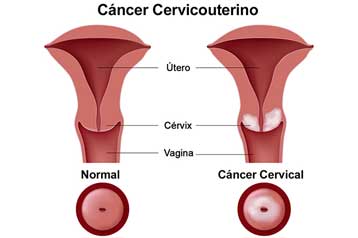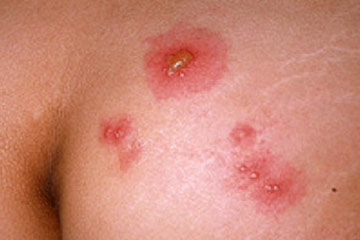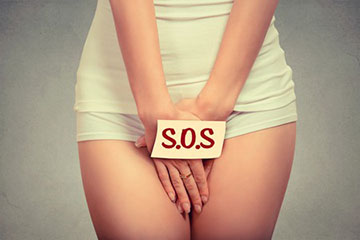Breast Cancer Prevention
The breast consists of lobes, lobules, and bulbs that are connected by ducts.
The breast also contains blood and lymph vessels.
These lymph vessels lead to structures that are called lymph nodes.
Clusters of lymph nodes are found under the arm, above the collarbone, in the chest, and in other parts of the body.
Together, the lymph vessels and lymph nodes make up the lymphatic system, which circulates a fluid called lymph throughout the body.
Lymph contains cells that help fight infection and disease.
When breast cancer spreads outside the breast, cancer cells are most often found under the arm in the lymph nodes.
In many cases, if the cancer has reached the lymph nodes, cancer cells may have also spread to other parts of the body via the lymphatic system or through the bloodstream.
Significance of breast cancer
Breast cancer is second only to lung cancer as the leading cause of cancer death among women in the United States.
Breast cancer occurs in men also, but the number of new cases is small. Early detection and effective treatment is expected to reduce the number of women who die from breast cancer, and development of new methods of prevention continue to be studied.
Breast cancer prevention
Breast cancer can sometimes be associated with known risk factors for the disease.
Many risk factors can be changed but not all can be avoided.
For example, women who inherit specific genes, such as BRCA1 or BRCA2, have a higher risk of developing breast cancer.
High-risk genes are risk factors that cannot be changed.
Researchers are looking for ways to prevent breast cancer in women with these genes.
The following factors are linked to an increased risk of breast cancer:
EstrogenEstrogen, a hormone produced by the ovaries, appears to increase a woman’s risk for developing breast cancer. A woman's exposure to estrogen and her risk of breast cancer is increased in the following ways:
- The use of estrogen-progestin therapy, also called combination hormone replacement therapy (HRT).
- Oral contraceptives ("the pill").
- Beginning to menstruate at age 11 or younger.
- Beginning menopause at a later age.
- Never being pregnant or having first child at an older age. Estrogen levels are lower during pregnancy and breast-feeding. A woman who has never had children, or who has her first child after the age of 35, has a higher risk of breast cancer than a woman who has her first child before the age of 20.
Radiation
Exposure of the chest to radiation during x-rays and radiation treatment, especially at a young age, increases the risk of breast cancer beginning 10 years later. Although a small number of breast cancer cases can be linked to radiation treatment, certain groups of people may be more at risk. Women who received radiation therapy for childhood Hodgkin’s lymphoma, for example, are at a greater risk for breast cancer later in life.
Radiation therapy to treat cancer in one breast does not appear to increase the risk of developing cancer in the other breast.
ObesityWeight gain after menopause, especially after natural menopause and/or after age 60, is linked to increased breast cancer risk.
AlcoholDrinking alcohol is linked to increased breast cancer risk. The more alcohol a woman drinks, the more the risk of breast cancer may increase, compared to a woman who drinks no alcohol.
The following factors are linked to a decreased risk of breast cancer:
Selective Estrogen Receptor Modulators (SERMs)SERMs are drugs that act like estrogen on some tissues in the body such as bones, but block the effect of estrogen on other tissues. Tamoxifen is a SERM that blocks the effect of estrogen on breast cancer cells. A large study has shown that tamoxifen lowers the risk of getting breast cancer in women who have an increased risk of getting breast cancer. However, tamoxifen may also increase the risk of endometrial cancer, stroke, and blood clots in veins and in the lungs. Women who are concerned that they may be at an increased risk of developing breast cancer should talk with their doctor about whether to take tamoxifen to prevent breast cancer. It is important to consider both the benefits and risks of taking tamoxifen.
Raloxifene is another SERM that is being studied for the prevention of breast cancer. A study of postmenopausal women with osteoporosis has shown that raloxifene lowered the risk of breast cancer for women at both high risk and low risk of developing the disease. It is not known if women who do not have osteoporosis would benefit in the same way. Like tamoxifen, raloxifene may increase the risk of blood clots in veins and in the lungs, but does not appear to increase the risk of endometrial cancer.
Aromatase InhibitorsIn postmenopausal women, aromatase inhibitors decrease the body's estrogen and lower the risk of breast cancer. After menopause, most of a woman's estrogen is made outside the ovaries from androgen, another hormone. Aromatase inhibitors stop an enzyme called aromatase from turning androgen into estrogen. Possible harms from taking aromatase inhibitors include decreased bone density and effects on brain function (such as talking, learning, and memory).
The removal of both breasts may reduce the risk of breast cancer in women with a family history of breast cancer. Before making the decision to have prophylactic mastectomy, it is important to undergo cancer risk assessment and counseling, and to carefully consider all the treatment options. In some women, prophylactic mastectomy may cause anxiety, depression, and concerns about body image.
Prophylactic oophorectomyThe removal of one or both ovaries decreases the amount of estrogen made by the body and decreases the woman's breast cancer risk. Also, drugs may be taken to decrease the amount of estrogen made by the ovaries. The sudden drop in estrogen may cause the following symptoms of menopause to occur:
- Hot flashes.
- Trouble sleeping.
- Anxiety.
- Depression.
- Lack of interest in sex.
- Vaginal dryness.
- Loss of bone density.
Exercising 4 or more hours a week may decrease hormone levels and help lower breast cancer risk. The effect of exercise on breast cancer risk is stronger in younger women of normal or low weight. Care should be taken to exercise safely, as physical activity carries the risk of injury to bones and muscles.
The effect of the following factors on the risk of breast cancer is not known:
AbortionStudies have not proven a link between abortion and breast cancer.
EnvironmentStudies have not proven that certain environmental exposures (such as chemicals, metals, dust, and pollution) increase the risk of breast cancer.
DietDiet is being studied as a risk factor for breast cancer. It is not proven that a diet low in fat or high in fruits and vegetables will prevent breast cancer. Studies have shown, however, that eating a diet rich in beta-carotene may decrease the risk of breast cancer. A diet rich in beta-carotene, folate, and vitamins A and C may reverse the higher risk of breast cancer linked to alcohol use.
StatinsStudies have not found that taking statins (cholesterol-lowering drugs) affects the risk of breast cancer.
Related Articles:
-
Cancer index
Source
National Cancer Institute
http://www.cancer.gov/






